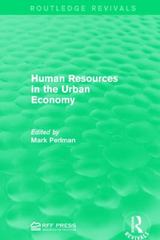9. Gains from trade Aa Aa El Consider two neighboring island countries called Contente and Felicidad. They each have 4 million labor hours available per week that they can use to produce jeans, rye, or a combination of both. The following table shows the quantity of jeans or rye that can be produced using one hour of labor. Jeans Rye (Pairs per hour of labor) (Bushels per hour of labor) Contente 6 12 Felicidad 4 16 Initially, suppose Contente uses 1 million hours of labor per week to produce jeans and 3 million hours per week to produce rye, while Felicidad uses 3 million hours of labor per week to produce jeans and 1 million hours per week to produce rye. Consequently, Contente produces 6 million pairs of jeans and 36 million bushels of rye, and Felicidad produces 12 million pairs of jeans and 16 million bushels of rye. Assume there are no other countries willing to trade goods, so in the absence of trade between these two countries, each country consumes the quantity of jeans and rye it produces. Contente's opportunity cost of producing one pair of jeans is of rye, and Felicidad's opportunity cost of producing one pair ofjeans is of rye. Therefore, has a comparative advantage in the production of jeans and has a comparative advantage in the production of rye. Suppose that each country specializes entirely in the production of the good in which it has a comparative advantage, producing only that good. In this case, the country that produces jeans will produce pairs per week, and the country that produces rye will produce bushels per week. In the table at the end of this problem, enter each country's production decision in the row labeled "Production." Suppose the country that produces jeans trades 14 million pairs of jeans to the other country in exchange for 42 million bushels of rye. In the table at the end of this problem, select the quantity of each good that each country exports and imports in the boxes across the row labeled \"Trade Action," and enter each country's nal consumption of each good in the row labeled "Consumption." When the two countries did not specialize, the total production ofjeans was 18 million pairs per week and the total production of rye was 52 million bushels per week. Because of specialization, the total production of jeans has increased by pairs per week, and the total production of rye has increased by bushels per week. Because the two countries produce more jeans and more rye under specialization, each country is able to gain from trade. Calculate the gains from tradein this case, the amount by which each country has increased its consumption of each good relative to the quantities given in the rst row of the table. In the table, enter this difference in the row labeled "Increase in consumption." Contente Felicidad Jeans Rye Jeans Rye (Millions of pairs) (Millions of bushels) (Millions of pairs) (Millions of bushels) Without Trade Prod. and consumption 6 36 12 16 With Trade Production Trade Action Consumption Gains from Trade Increase in consumption








